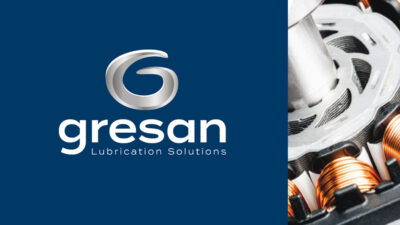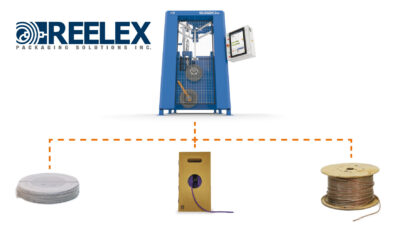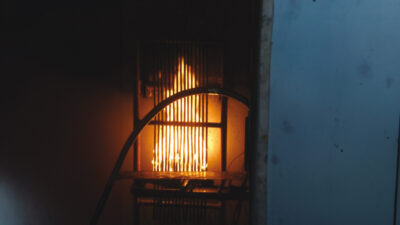Fire safety of cables Seconds can save lives

Investors and legislators require more and more fire safety in buildings, in production facilities or in vehicles. Cables are also affected by this. In the event of a fire, they must not emit toxic substances and must not conduct the flame.
Many people must surely remember the tragic fires on the London Underground, at Düsseldorf Airport, in the Channel Tunnel or in the Mont Blanc Tunnel. These fires cost the lives of many people and caused damage running into the billions. But it is not just these huge disasters that cause casualties. Each year, about 400 people die in smaller fires in Germany alone.
It is thanks to the increased use of smoke detectors that this number has slowly dropped over the last ten years. In addition, the subject of fire protection is very important to investors when they erect buildings or purchase production facilities, not least due to statutory regulations. Here, careful selection of the utilised materials is important. This means that cables and wires have also come into focus. Nowadays there are cables that have low smoke gas development in the event of fire, produce less (visible or invisible) toxic gases and do not conduct the flame like a fuse. Today, they are combined under the term fire protection cables. In the event of a fire, they improve the chances of survival of people and reduce the health risks associated with the inhalation of smoke. The reduced smoke development allows fleeing people to see the escape routes for longer and thus reach the outside unharmed. These cables also reduce the risk for fire brigades, since rescuers no longer have to fight their way through thick clouds of smoke.
Toxic cocktail in the air
The most frequent cause of death in fire catastrophes is suffocation or poisoning due to combustion gases that are produced by the fire. Carbon dioxide (CO2) and carbon monoxide (CO) are produced here, oxygen in the air that is vital to life disappears in closed spaces. Furthermore, toxic and dioxin-loaded combustion residue, contaminated extinguishing water and corrosive and poisonous flue gas residue pollute the surrounding area. This damage can only be remedied by an expensive clean-up operation, and even then not all of it can be disposed of in an environmentally friendly manner. In Germany, the annual cost of fire damage is about one billion euros, wherein almost 50 per cent is caused by secondary damage. A further problem lies with fire spreading via the cable routing paths installed in the building. With insufficient firewalls, the flames can quickly spread. A study at Lund University shows that the time window in which safe escape of persons is possible is only about one minute in some circumstances.
Halogen-free and of low flammability In order to curb this risk and the resulting damage, the cable industry has developed highly inflammable, halogen-free cables which meet heightened safety requirements. Halogen-free means that these cables are completely free of the reactive elements bromine, iodine, fluorine and chlorine.
This has many advantages:
• There are no corrosive gases released. Irritation of eyes and the respiratory tract is greatly reduced. Aggressive chemical compounds are also not formed with the extinguishing water. This means that substantial secondary damage is not caused to the building and the electrical installations due to corrosion.
• The proportion of toxic gases is low. Dioxins are no longer emitted from burning cables.
• Halogen-free cables with improved performance in the event of fire are extremely flameresistant and allow for little spreading of flames. The dreaded fuse effect does not occur, the focus of the fire does not extend beyond the location of the fire.
• Halogen-free cables with improved characteristics produce little smoke in the event of fire. Escape routes and extinguishing routes for the fire brigade are hardly impeded by dense smoke.
The Lapp Group has a number of such cable types in its portfolio, including the ETHERLINE® HEAT 6722. This product was specially developed by the Stuttgart cable experts for use in buses, where large numbers of people are in a confined space. Also available is the ETHERLINE ® FIRE Cat.5e PH120, a flexible industrial data cable designed for fixed installation inside buildings. It guarantees record-breaking insulation integrity upon exposure to fire for at least 120 minutes and is the only cable on the market that can withstand at least two hours in a fire while still transmitting data.
New requirements from cables
The European Parliament and the Council of Europe have recognised that the protection of people and buildings in the event of fire is an urgent objective and, in addition to other construction products, have classified power, control and communications cables as construction products and have regulated this in a binding manner in Construction Products Regulation (EU) No. 305/2011.
The Construction Products Regulation came into force for all member states on 1st July 2013. In this regulation, cables and wires are classified with respect to their fire protection properties and are assigned to Euro classes A to F in accordance with their fire behaviour. The thermal release and flame propagation are also taken into consideration. In each case, there are three additional classes for smoke development, acidity and burning droplets. Placement into these classes is effected in accordance with defined testing standards. The requirements for performance of the cables and wires with respect to fire behaviour and the corresponding test and evaluation criteria are specified in the harmonised standard “EN 50575 Power, control and communication cables – cables for general applications in construction works subject to reaction to fire requirements”. A conformity assessment will be carried out by a notified body and a certificate of consistency of performance will be issued. Here, the fire safety level of the cable is dependent on the type of building. The manufacturers must submit a declaration of performance for each product, wherein this is a component of the EU conformity declaration and the assignment with respect to fire protection for the structure is identifiable therefrom.
In order to improve fire protection in buildings, the German Electrical and Electronic Manufacturers’ Association (ZVEI) suggests that fire protection cables of European fire protection class B2 be used in special buildings with very high safety requirements such as hospitals, retirement homes and nurseries, and that fire protection cables of European fire protection class C are used in buildings with high safety requirements such as in offices and administrative buildings.
New standard come into force The schedule for the examination and the resultant declaration of performance depended on the publication of the harmonised standard EN 50575. Application of the harmonised standard for cables and wires under Construction Products Regulation EN 50575:2014 commenced on 10th June 2016. The coexistence period commenced on July 1st 2016 and ends on July 1st 2017. The Lapp Group had already tested several cables and wires in accordance with the new standard, first certifications had already been issued. The declarations of performance were also available for various products. Thus the constancy of performance for the ÖLFLEX CLASSIC 100H had been certified by VDE. In accordance with EN 13501-6, this product family and also the ÖLFLEX Classic 110H has been classified for the Euro class. The Lapp Group will have other cable families tested and classified by notified bodies in accordance with the Construction Products Regulation (CPR).
Cables are tested at the Fire Testing Centre of the Lapp Group






